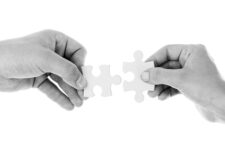 Years ago after a jury trial a juror referred me to Garr Reynolds’ Presentation Zen. I continue to use Mr. Reynolds’ teaching to connect which is important for us all.
Years ago after a jury trial a juror referred me to Garr Reynolds’ Presentation Zen. I continue to use Mr. Reynolds’ teaching to connect which is important for us all.
As taught by Reynolds in any conversation I need “connection.” Without connection my listener is left with emptiness. Through connection I bound. People relate to me when I connect.
Movement and body language are important for connection. For movement I continue to practice Tai Chi, study body language and the zen concept of living in the moment.
In jury selection this means staying away from the past and the future. I guard against thinking about what I want to discuss instead of listening in the moment. I listen, engage, and connect with the other person. As stated by Reynolds there is an energy when I am present. This energy is experienced by the listener.
My body language conveys relaxation. When I relax my listener relaxes. When I am uptight my listener is uptight. Through Tai Chi I know to be soft and balanced. I breathe deep-into my naval-rather than shallow in my chest. My position is balanced and natural. My hands stay in the “zone of truth” which is waist high moving in and out as I speak.
To connect I accept the listener even when I disagree. This makes the listener more likely to accept my message. Through Tai Chi I know strength is through non-resistance. Resistance is a turn off. Non-resistance makes a friend. The “friend” I make may be a member of the jury. Even when the person initially disagrees his frame of reference is open to the possibility my message should be accepted. Through non-resistance and acceptance I have a chance to reach agreement and acceptance.
I also meditate to shed fear. Fear comes when I worry about defeat. This happens when I think ahead to the result. I stay in the moment and engage with my listener. By recognizing I lack control over the result, but have control over myself in the moment, I am able to move in the present, relaxed, balanced and engaged. This gives me the best likelihood of connecting which gives me the highest likelihood of success.
Post Footer automatically generated by Add Post Footer Plugin for wordpress.


 A successful personal injury lawyer must try the case when the insurance company is unreasonable Trial requires performance under stress. For performance at the highest level:
A successful personal injury lawyer must try the case when the insurance company is unreasonable Trial requires performance under stress. For performance at the highest level: “The human energy system is an energetic webbing that permeates the entire body. It is the system that empowers the body and energizes and enlivens the mind, providing the energetic foundation upon which the body is built. It is the network through which all life energy flows.” Kilham, The Five Tibetans (1994) at 10. Kilhan points out we are incarnate beings meaning we are beings who live in bodies.
“The human energy system is an energetic webbing that permeates the entire body. It is the system that empowers the body and energizes and enlivens the mind, providing the energetic foundation upon which the body is built. It is the network through which all life energy flows.” Kilham, The Five Tibetans (1994) at 10. Kilhan points out we are incarnate beings meaning we are beings who live in bodies.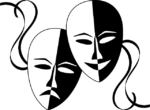
 Aristotle teaches tragedy is the imitation of action in life. Well-being (health) and ill-being (injury) “reside in action” with the goal of life being activity. “People achieve well-being or its opposite on the basis of how they fare.” Poetics (The Primacy of Plot). The “plot” in tragedy concerns the action and how the hero fares.
Aristotle teaches tragedy is the imitation of action in life. Well-being (health) and ill-being (injury) “reside in action” with the goal of life being activity. “People achieve well-being or its opposite on the basis of how they fare.” Poetics (The Primacy of Plot). The “plot” in tragedy concerns the action and how the hero fares.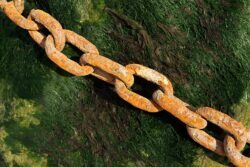 The second element of personal injury tragedy is adversity. The audience relates to a true to life, realistic, honest hero. In tragedy there must be adversity or harm to the hero. Without harm there is no reason to be concerned about our hero. The audience must see adversity and the hero overcoming it to continue his quest.
The second element of personal injury tragedy is adversity. The audience relates to a true to life, realistic, honest hero. In tragedy there must be adversity or harm to the hero. Without harm there is no reason to be concerned about our hero. The audience must see adversity and the hero overcoming it to continue his quest. 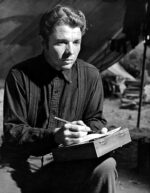 Aristotle discusses the traits of the tragic hero. The hero does not need to be an award winner or have recognized accomplishments. The key is be true to life and realistic. There is a lack of pretense. The audience needs to see the hero as appropriate to his or her position in life. There is no exaggeration, and the hero is consistent in his actions.
Aristotle discusses the traits of the tragic hero. The hero does not need to be an award winner or have recognized accomplishments. The key is be true to life and realistic. There is a lack of pretense. The audience needs to see the hero as appropriate to his or her position in life. There is no exaggeration, and the hero is consistent in his actions.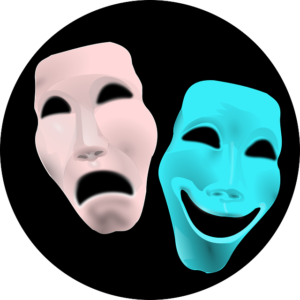 Having learned from Simon Rifkind all trials are plays, I sought a theatrical formula appealing to audiences over time that mirrors a personal injury case. I found Aristotle in Poetics sets forth what has become the classic formula for tragedy and it fits a personal injury case.
Having learned from Simon Rifkind all trials are plays, I sought a theatrical formula appealing to audiences over time that mirrors a personal injury case. I found Aristotle in Poetics sets forth what has become the classic formula for tragedy and it fits a personal injury case. Interview With
Interview With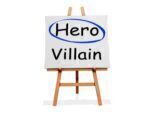 Beginning in law school law school I knew I wanted to be a trial lawyer. This meant studying trial lawyers. I started with Simon Rifkind. From Rifkind I learned trials are plays.
Beginning in law school law school I knew I wanted to be a trial lawyer. This meant studying trial lawyers. I started with Simon Rifkind. From Rifkind I learned trials are plays. 